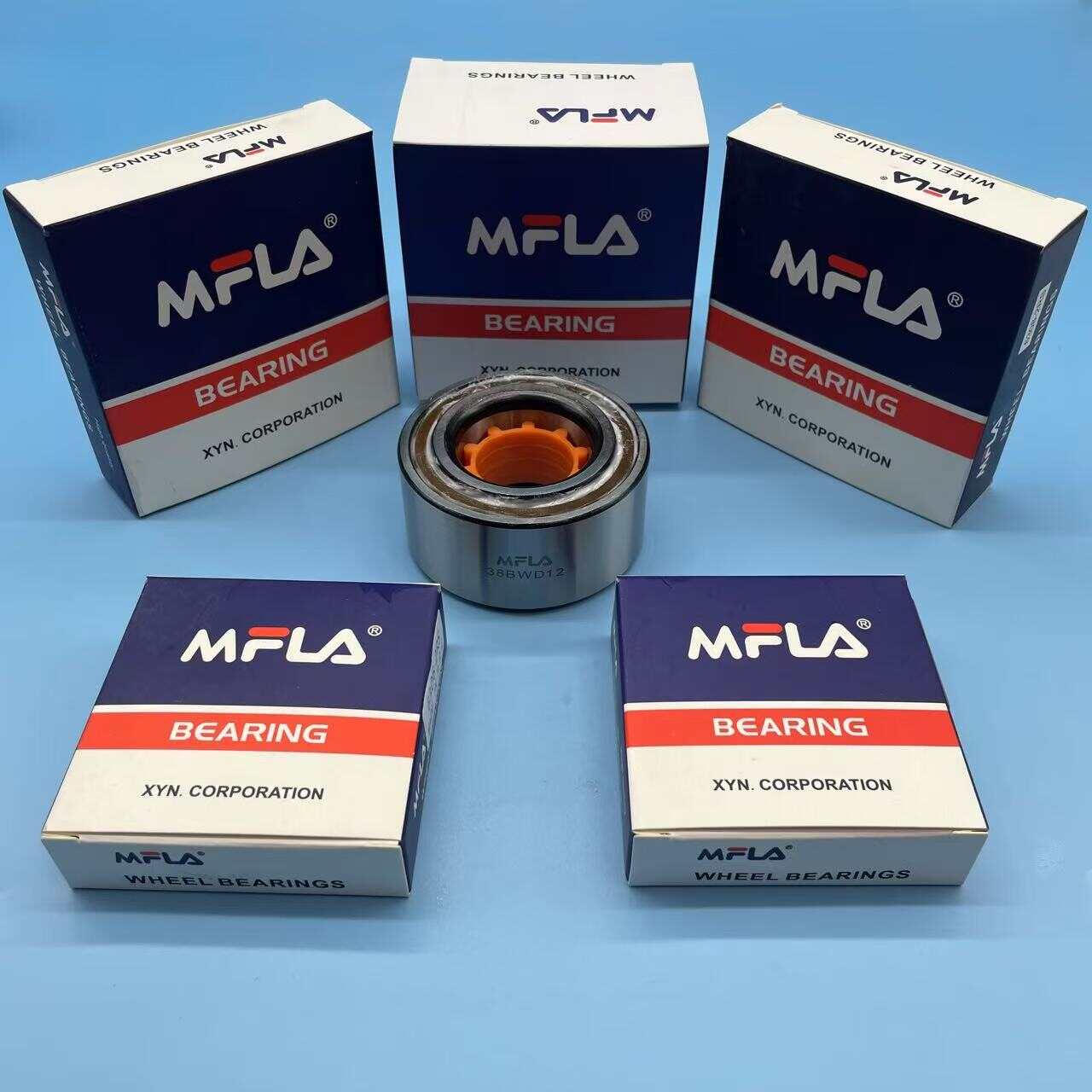Email format error
Email cannot be empty
Email already exists
6-20 characters(letters plus numbers only)
The password is inconsistent
Email format error
Email cannot be empty
Email does not exist
6-20 characters(letters plus numbers only)
The password is inconsistent


5 Key Considerations When Selecting Wheel Bearings for EV Platforms
The shift to electric vehicles is more than just swapping an engine for a battery. It's a complete re-imagining of automotive architecture. Every component is scrutinized for its impact on efficiency, performance, and user experience. While often overlooked, the wheel bearing is a critical component that demands careful reelection for EV applications.
Selecting the right wheel bearing is not a mere procurement task; it's a strategic engineering decision. Here are the five key considerations to ensure your EV platform achieves its full potential.
1. Low Friction & Torque: The Guardians of Range
The EV Challenge:
In an EV, every watt-hour of energy is precious. Ancillary loads that drain the battery have a direct, measurable impact on driving range. Traditional bearings designed for internal combustion engines (ICE) may not be optimized for the unique demands of EVs, which often operate at higher speeds and are more sensitive to parasitic energy losses.
The Engineering Consideration:
Focus on Low Torque (LT) design. This involves:
-
Advanced Seal Technology: Low-friction, non-contact or lightly contacting seals are essential to minimize drag.
-
Optimized Grease: Specialty low-viscosity lubricants formulated for a wide temperature range reduce churning losses.
-
Precision Grinding: Ultra-smooth raceways and rolling elements minimize micro-slip and friction.
Why it Matters: A bearing with just marginally lower friction can contribute to a tangible extension of vehicle range, a key selling point for any EV.
2. High-Speed Capability: Handling the RPM Revolution
The EV Challenge:
Electric motors can reach and sustain far higher RPMs than most ICEs. Furthermore, the elimination of multi-gear transmissions in many EVs means the wheel bearings are subject to these high rotational speeds directly.
The Engineering Consideration:
Bearings must be engineered for dynamic stability.
-
Cage Design: Robust, lightweight polymer or advanced composite cages prevent deformation and manage centrifugal forces at high RPMs.
-
Heat Management: The design must facilitate efficient heat dissipation to prevent grease degradation and thermal expansion that can lead to preload loss or seizure.
Why it Matters: High-speed performance is non-negotiable for safety, reliability, and to unlock the full performance envelope of the electric drivetrain.
3. Weight Reduction: Every Gram Counts
The EV Challenge:
Weight is the nemesis of efficiency. Heavier vehicles require more energy to accelerate and decelerate. Reducing unsprung mass (the weight of components not supported by the suspension) is particularly crucial as it improves handling, ride quality, and tire wear.
The Engineering Consideration:
Pursue integrated and lightweight solutions.
-
Unitization: Third-generation (GEN 3) hub units integrate the wheel bearing and constant velocity joint (CVJ), reducing part count, weight, and assembly complexity.
-
Material Science: Exploring advanced steels, alloys, or even composite components can shave critical grams without compromising strength or durability.
Why it Matters: Lighter wheel bearings directly contribute to a longer driving range and a superior driving dynamic.
4. Integrated Sensor Capability: The Bridge to ADAS
The EV Challenge:
EVs are at the forefront of automation and Advanced Driver-Assistance Systems (ADAS). These systems rely on precise, real-time data on wheel speed, direction, and torque for functions like ABS, traction control, and regenerative braking.
The Engineering Consideration:
The bearing is the perfect host for embedded sensors.
-
Magnetic Encoder Rings: Integrated seals with magnetic bands provide accurate data for ABS and traction control systems.
-
Smart Bearings: Next-generation "smart hubs" can integrate sensors to monitor bearing health (temperature, vibration) for predictive maintenance, a key feature for autonomous vehicle fleets.
Why it Matters: Choosing a sensor-ready bearing future-proofs your platform for higher levels of autonomy and provides critical data for vehicle safety systems.
5. Durability in a New Environment: Silence and Longevity
The EV Challenge:
The operating environment changes with electrification. The absence of engine noise makes other sounds, like bearing rumble or whine, far more noticeable to occupants. Furthermore, high instant torque from electric motors places different stress loads on components.
The Engineering Consideration:
Durability means acoustic performance and mechanical integrity.
-
NVH Optimization: Superior manufacturing precision, optimal preload setting, and acoustic dampening features are critical to ensure a quiet cabin.
-
Robustness: Bearings must be built to handle the immediate torque delivery of electric motors, which can be especially high in performance variants.
Why it Matters: A quiet cabin is a premium experience. Long-term reliability under high-torque conditions ensures customer satisfaction and minimizes warranty claims.
Conclusion:
Selecting a wheel bearing for an EV is about choosing a fully integrated system that contributes actively to the vehicle's goals, not just a component that passively allows rotation.
At MFLA Bearing, we don't just manufacture bearings; we engineer Electrified Mobility Solutions. Our wheel bearing units are specifically designed from the ground up to meet these five critical challenges. From our proprietary Low-Drag Seals that protect range to our SmartHub-ready design for ADAS integration, we provide the engineering partnership you need to succeed.

